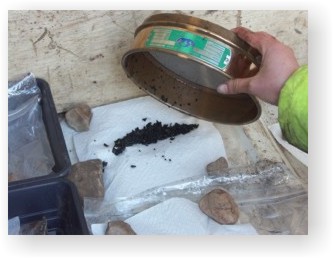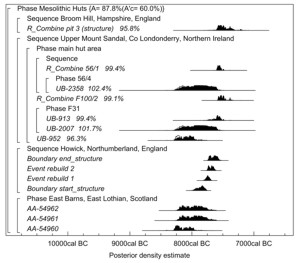Radiocarbon Dating and Analysis
 |
 |
Radiocarbon dating is the process of measuring the amount of carbon-14 isotope remaining in an organic material and from this measurement the age of the sample can be calculated. Carbon-14 (14C) is incorporated into plants when they photosynthesize carbon dioxide from the atmosphere. After the plants die or are consumed by other organisms the 14C fraction declines at a fixed exponential rate due to the radioactive decay of 14C. Comparing the remaining 14C fraction of a sample to that expected from atmospheric 14C allows the age of the sample to be estimated. The raw 'uncalibrated' radiocarbon ages are given in radiocarbon years before the present day (BP) but these do not equate directly to actual calendar years due to variations in atmospheric carbon over time. To account for this the radiocarbon ages have to be 'calibrated' against tree-ring data to produce a calendar date range.
Archaeological Research Services Ltd in collaboration with English Heritage have been at the forefront of recent developments including the use of Bayesian probability modelling to date the internationally renowned Mesolithic house site at Howick.
ARS Ltd provides a complete radiocarbon dating service including assistance with sample selection, analysis, calibration and, if appropriate, Bayesian mathematical modelling. We have negotiated special rates with reputable radiocarbon laboratories which allows us to provide exceptional value for money.
For more details please contact one of our senior archaeologists using this link.